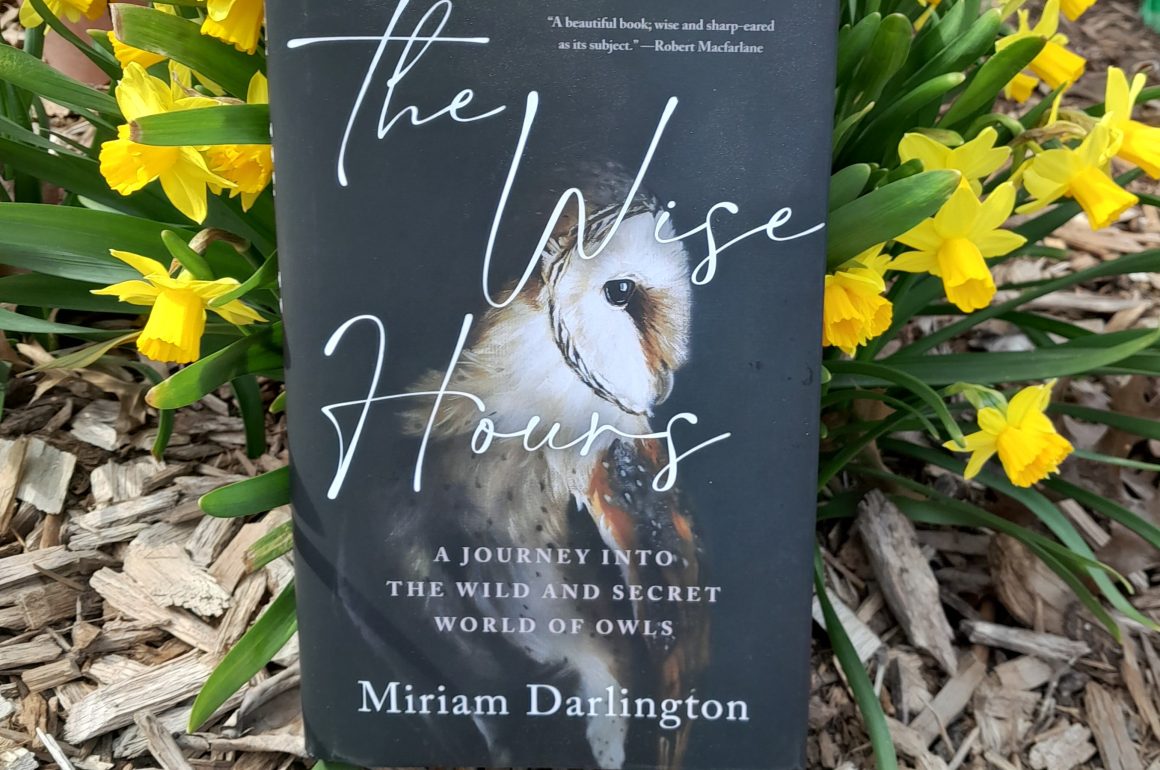
Miriam Darlington determined to take on an owl quest, to immerse herself in their world, as she says, and also to find out how they are immersed in ours – to “look into the mythology, kinship, otherness and mystery that wild owls offer.”
In the human psyche, owls can be cuddly signs of good luck and benificence (as they are in Japan, and Harry Potter movies) and, at the same time, eerie and unsettling. Either way, they are perhaps more central to our stories and lore than other birds, a familiar example, as Darlington reminds us, being Shakespeare’s Macbeth. When it is seen that
A falcon, tow’ring in her pride of place / Was by a mousing owl hawk’d at and kill’d,
that is taken as a sign that the natural order has been disturbed (there, by Macbeth’s act of regicide).
Darlington’s project (which became bigger than she first had planned, and her peregrinations longer) culminated in The Wise Hours: A Journey Into the Wild and Secret World of Owls.
An Englishwoman, she thought, originally, that she would stay within the British Isles, to see the five or six native species. Among other reasons for her seemingly modest itinerary, her family needed her, especially her son Benji, whose struggles with a not-ever-completely identified malady (“some synapse was misfiring”) caused her, she writes in a hard metaphor, to live “with a ball of barbed wire in my stomach.” Thus her story becomes “braided with two ecologies – the ornithological and the personal.”
She starts with the Barn Owl, and proceeds in her book, one owl per chapter, usually informed by an expert guide of some sort, such as Luke, an officer in Britain’s Barn Owl Trust. She accompanies Luke on his Barn Owl counting, a heartening and optimistic chore now that British farmers have learned to prefer owls, as a pest control method, to strychnine, which kills rats but also the owls that feed on them. The Barn Owl Trust places nest boxes on lands of willing farmers who, Darlington says, consider it a “badge of honour” when an owl comes to nest in one.
Eventually, by the middle of the book, Darlington’s wanderlust, and desire to see more of owl species that are scarce in Britain, send her onto the continent: for the Little Owl, to France (where birdwatchers, she says, are decidedly unpopular; the French prefer shooting birds to hunting them nonviolently); to Southern Spain and then Finland for the Eurasian Eagle Owl; and, most memorably, to Kikinda, in Serbia for the largest known gathering of Long-eared Owls in the world. (Readers of this site already know about this extraordinary place from Dragan’s evocative post of November 2018, “The 701 Long-eared Owls of Kikinda.”)
Leaving aside the occasional cloying locution (“the great secret of volunteering: it is the giver who gains, and it is a gain through the soul, not the pocket”), Darlington can be a perceptive and affecting nature writer. As she notes, Eastern Europe contains significant pockets of agriculturally undeveloped land, and thus has a far greater diversity of species “from invertebrates to large carnivores” than in Northern Europe. How long that circumstance would obtain if Serbia were (for example) in the European Union, with its agricultural monocultures, is questionable, she says. But, for now, such places are “a reminder of wild Europe, the laid-down layers of moss, peat and water, and the unending reedy marsh.”
_______________________________________________________________________________________________
The Wise Hours: A Journey Into the Wild and Secret World of Owls. By Miriam Darlington. Tin House, Portland, Oregon, 297 pp., US $27.95, CAN $36.95. February 7, 2023. ISBN: 9781953534835 (hardcover); ISBN 9781953538482 (ebook).











Leave a Comment